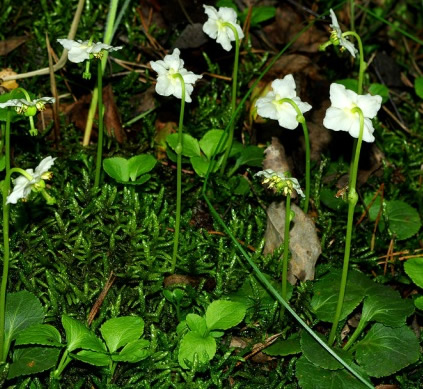Bethleham Star

Botanical Name: Moneses uniflora
Common Name: Bethlehem Star or Single Delight
Other Names: Ikignganaq (Something that reminds you of kneeling down) frog’s reading lamp, shy maiden
Found in: Moist, mossy woods
Physical Characteristics: This small plant has a rosette of small, light green, roundish leaves (about ½ inch) with shallow teeth. The flower is on a leafless stem 2 ½ to 4 inches high and has 5 pointed, waxy petals. It has a protruding ovary and faces downward. The Capsule is round with protruding stigma (Pratt 1989). Because the plant is an evergreen and tends to grow under spruce trees, where little snow accumulates, it can be gathered fresh throughout the year. The entire plant can be dried.
Nutritional Value: Vitamin C
Parts of the plant used: Entire plant. (Flower, stem and root)
When plant should be gathered: June and July and even into Mid-August
Plant applications: infusion, decoction
Reported Benefits: Upper respiratory ailments including colds, coughs, sore throats, and lung disorders
Preparation/Processing: Prepare a decoction from the roots and drink the tea (Kari 1995). The entire plant or only a few leaves can be steeped in one quart of water, let stand for 15 or 20 minutes to make a tea and drink one mouthful a day, or used as a gargle. You can tell if it’s too strong, it will look like week tea, it has to be clear. It’s recommended that only a leaf be used for children in a cup of boiling water, then given only a teaspoon two or three times a day. (Wennekens 1985).
Warning: An infusion too strong could injure the throat (English Bay Students, 1981:14)
